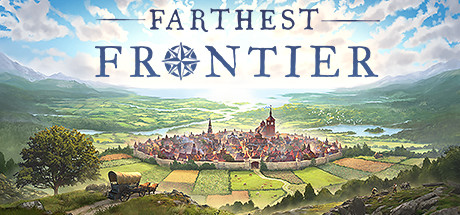
FARTHEST FRONTIER
Developed by Crate Entertainment
Available on Steam in Early Access
If medieval-style town building sims are your thing, then you may want to cast your eyes over Crate Entertainment’s FARTHEST FRONTIER which recently became available in Early Access on Steam. As an Early Access game, FARTHEST FRONTIER is still in development mode but is at a level enough that the game can be played and enjoyed whilst the game is improved and bugs ironed out before the game’s release.
Having played strategy sims before, like Rollercoaster Tycoon and Two Point Hospital, as well as games like Tropico and Valhalla Hills which are more similar in style to this than the others, I’m familiar with the setup of these type of games. In FARTHEST FRONTIER though, you’re tasked with creating a home for a band of settlers in the hopes of growing the community into a self-sufficient town… that’s if you can prevent them all from dying off. Easier said than done…
When you first load up the game, you’ll have a choice on which difficulty setting to play – the harder the difficulty, the more hazards you can possibly encounter which will impact the survival of your villagers. However, there’s also an option to play where you don’t encounter any issues with illness, animal attacks or the like, leaving you to concentrate on building your community in peace. That may be okay for some who just wish to quietly chill out but if you’re looking for a challenge, then you’re going to want to come up against problems you need to overcome such as famine, sickness and even bandit attacks!
After selecting a location, or allow the computer to randomly select one for you, you’re able to select a suitable patch of land in which to host your community. Though initially you have full scope of the land you’re presented with, depending on where you set down base will factor in how much of that land you can explore so it’s best to choose wisely. For instance, I decided to place my town center in a clearing surrounded by a dense forest, which provides timber to build shelters and chop into firewood, and a large body of water which provides my villagers with easy access to a well and fishing opportunities. Not only that, I’d spotted deer and wolves roaming in the woods before settling down, which means my villagers don’t have to stick with being vegetarians and can dine on fresh meat and wear hides and pelts, providing my hunters do the job they’re supposed to. It’s also an idea to place your town center in an area that is plentiful in clay, iron ore, berries and herbs. Basically, everything you may need to keep your villagers alive.
The game wastes no time in getting you set up. As soon as you place the town center, which also asks as a storage facility, you’re encouraged to build shelters for your labourers so they have somewhere to live. You may also want to build a graveyard early on too in case there’s any mishaps. After all, your villagers can die of all sorts of ailments. Mine have succumb to starvation, pneumonia but surprisingly not a house fire (I can only assume the residents were out at the time). Seeing the little villagers grab water and put the fire out, or hack down trees for my developments, is fun to watch. You can zoom right in and even click on the various villagers to see their unique specs, such as job role, health, hunger, etc. You can even rename the townsfolk if you wish.
Keeping your band of settlers warm is the priority once your shelters are built, so it’s important that you keep a steady supply of firewood, especially when the winter season rolls in. The problem lies when you want to build more shelters and other huts as those timber supplies will be used to build your developments and suddenly you’ll find yourself using more logs than you can chop – and that’s if you haven’t severely depleted the trees in the vicinity. Though dead pine trees are the ideal type to chop down, sometimes you have no option to hack down those beautiful bushy trees in the quest to grow your settlement.
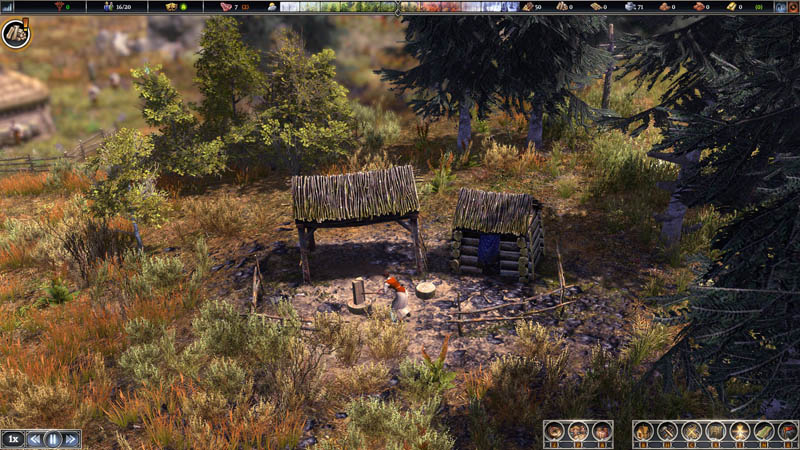
Feeding Your Villagers in Farthest Frontier
Keeping your villagers well fed and happy is the goal of the game and there’s various ways in which you can source food. You can build forager huts which will see a villager or two tasked with collecting herbs, berries, mushrooms and other organic foodstuffs from the designated area in the hut’s radius. It’s worthwhile placing a couple of huts if you have plentiful bush supplies dotted around the map so you can cover the various areas.
If you’ve placed the settlement near the water, then building a fishing hut or two should be high on your priority list as they can catch a haul that will keep your villagers fed. Depending on where you place the fishing hut will result in how big a catch you’ll receive. This goes for most building placements in the game – the more resources where you plan to position the building, the better, whether it’s for food stuffs or for villager satisfaction.
As previously mentioned, if you have deer or wolves in the area, then take advantage by placing a hunter’s cabin nearby so they can hunt the creatures down.
Like other city-building strategy sims, FARTHEST FRONTIER allows you to grow your own crops with a three-year rotation system and a selection of crops to choose from. I’ve yet to master this aspect of the game, as you have to find the right balance of soil and keep the weeds out, but it’s great there’s an option to delve into it. What I hadn’t realised, at the time, was when setting out my crop field that those pesky deer, that would become a meal on my villagers’ table, would also be trampling and gobbling up my crops. Argh! Fortunately, there’s the ability to fence off your field, with wooden fences or dry stone walls, to prevent them from wrecking your harvest because, trust me, they will!
With most food stuffs, there’s the ability to create storage facilities to keep a food reserve as well as options to extend the life of some of the foods, such as smoking the meat at a smokehouse. A plentiful supply that will last months will encourage new settlers to join your village so if you’re intending to grow the community, this is an important aspect. However, food doesn’t last forever and it can spoil if you have an abundance or it’s not well stored.
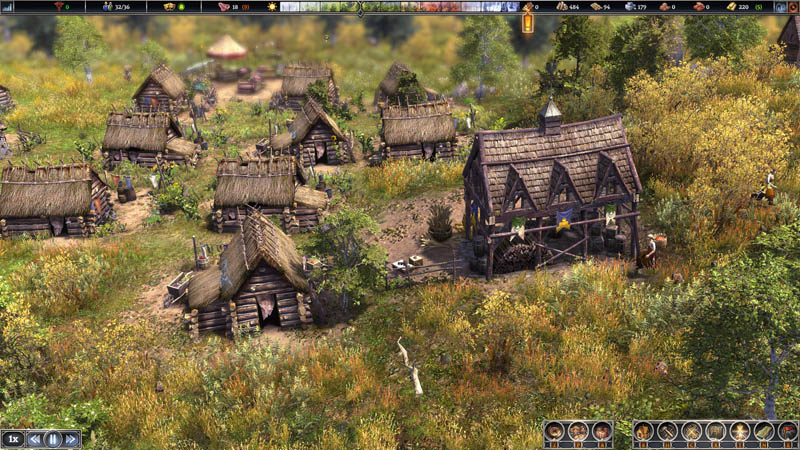
Developing the Town
When you first play a map, you’ll have access to a limited number of buildings. As the game years pass by, further building and resource types are unlocked, but some are locked until you meet certain tier requirements. At the base level, you can build a saw mill, hunter’s cabin, foragers hut, smokehouse, fishing hut, a cobbler’s, wicker basket weaver and tannery. There’s plenty to get you started.
Harvesting food and raw materials is perhaps the most important aspect of the game as this will feed the villagers and support the growth of the town. Without food or materials, the settlement will be doomed.
As more products are created, the better life your inhabitants will lead. For instance, by building a cobblers, your villagers will be able to work in comfort and thereby prevent injury. With an abundance of product, you’ll be able to create a market hut where product can be sold, making extra coin for your town.
I’ve just scratched the surface in what the game can possibly deliver. By developing the town further, reaching tier 2 and 3 buildings and creating a walled community to secure and prevent attacks is how you grow the town within the game.
To upgrade buildings requires specific achievements to be met. Upgrading the Town Center will unlock Tier 2 assets and meet requirements to upgrade other buildings, such as shelters, but that’s if all the requirements are met for a particular type of building which is sometimes easier said than done. For instance, to upgrade your shelters, one of the requirements is to have a 30% desirability for that property. One of the ways to do this is to add decorations so, in my gameplay, I placed a shrine which helped to boost the desirability but not enough to meet the 30% threshold. I could add a small garden or other decorations, providing I have the room to do so as in order to influence the desirability, it must be in the radius of the buildings.
Another way of improving the town is by creating paths for your villagers to travel on. This allows them to get around your town a lot quicker which is important when they’re delivering food stuffs or raw materials for building.
Seriously Strategic
Compared to other games I’ve played before now, FARTHEST FRONTIER is a deeper city-building sim experience with a bigger learning curve than I’ve experienced before. It doesn’t hold your hand that much and the challenges it presents for someone who’s a beginner, or perhaps not exactly brilliant at these game (I’d probably count myself as the latter though I do enjoy playing them), is greater than your average game. I’ve yet to reach the dizzying heights that others have with their communities with their breathtaking layouts but I intend to get there… eventually.
I wish FARTHEST FRONTIER had an option of walking through a player more than it does with objectives that are explained better, a tutorial mode or at least offer a bit more handholding. However, if you’re a seasoned player of city sims, then you’ll no doubt love what the game has to offer with its complexities and range. Creating a fully-fledged town and keeping your settlers alive and well is certainly a skill not to be sniffed at in FARTHEST FRONTIER.


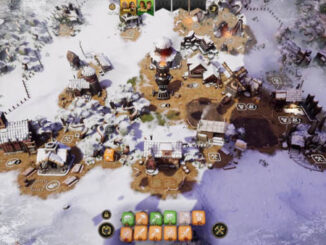

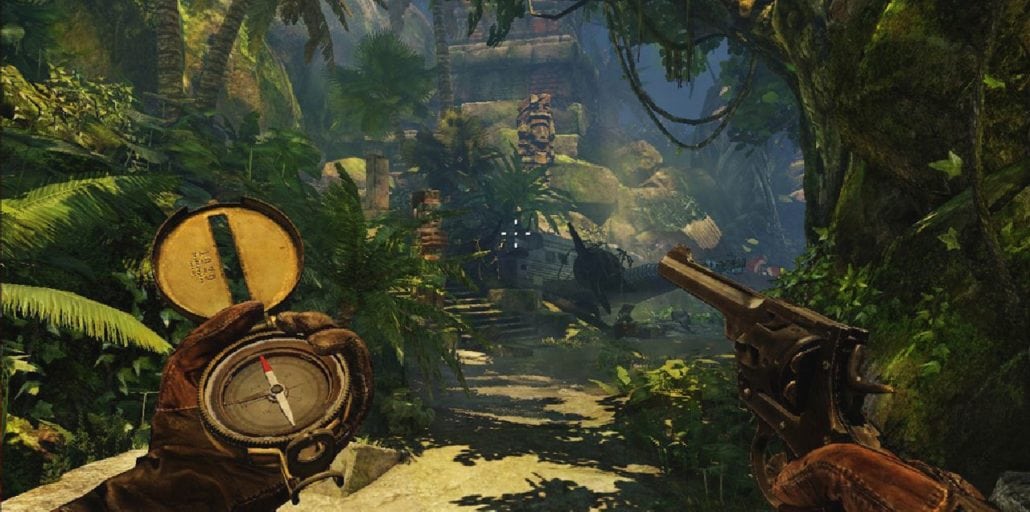
Be the first to comment